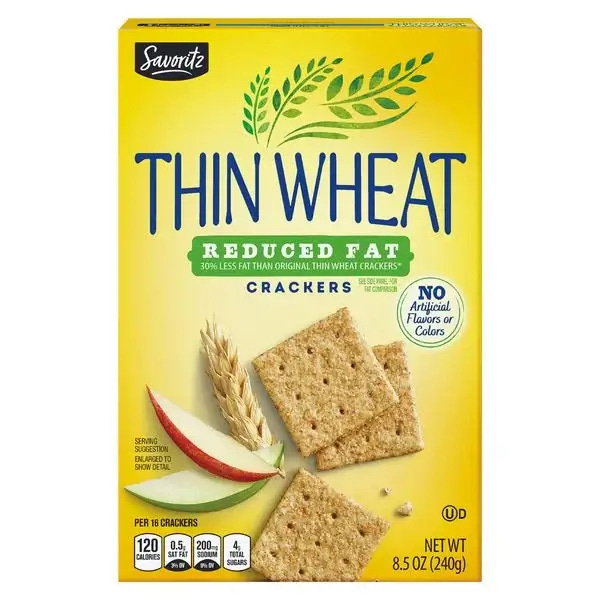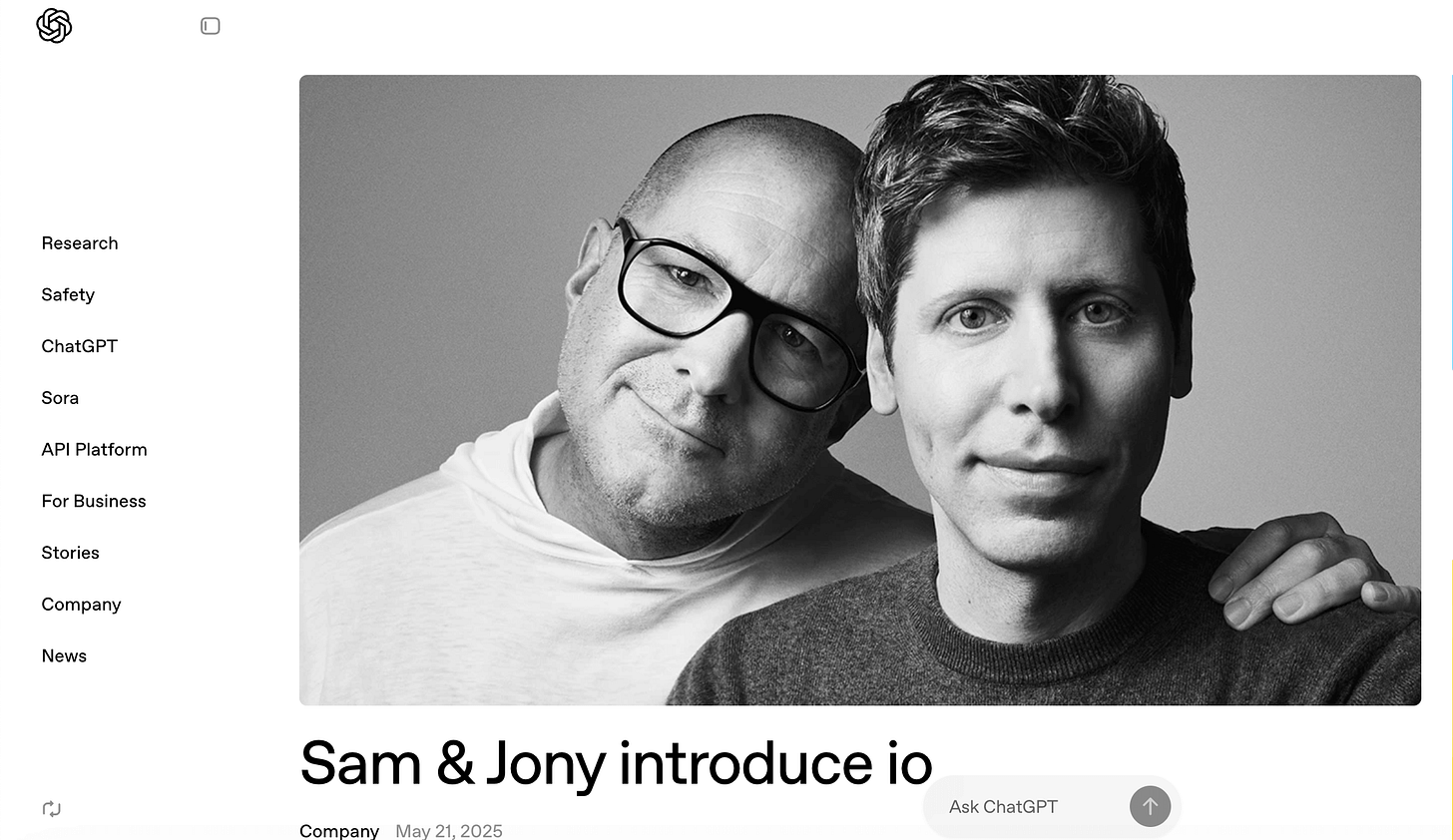The 'Ring Around the Collar' of Software
And the only commercial jingle to become a number 1 hit
Hello Gobbledeers,
How’s it going?
You may have seen the story from last week about Mondelez (the former Nabisco cookie/cracker people) suing Aldi (the supermarket that your parents like to call you about to tell you how cheap their food is) over their “blatant copying” of their packaging.
How blatant?
It made me curious - can you copy packaging like that?
And because I have a podcast, I decided to find out the answer to that question. In the latest episode of Everything Is Marketing (also available on Apple Podcasts, Spotify and elsewhere), I speak with intellectual property attorney Marc Reiner about how marketers can protect themselves from copyright lawsuits. I had 2 takeaways from the conversation:
You can probably copy more than you think.
He has had so many marketing people tell him that they’ve heard it’s OK to copy another company’s work “as long as you change 40% of it.” Bad news - that’s not true.
Check out the episode - I definitely learned more than just those 2 things…
Today in the Gobbledy Newsletter:
Zig when others zag (homepage edition)
We’ve only just begun
Ring around the collar.
Here’s How Quickly Things Change…and a Lesson from That
It seems like just last week that I wrote about the homepage of a small tech consulting firm called Hermit Tech that I thought was a brilliant example of the type of headline early-stage companies should put on their website. A very quick reminder:
Oh yes, I remember that - we talked about how early stage companies should be super specific in what they do and who they’re going after.
Well, here’s something funny - those guys went and changed their homepage roughly 5 minutes after I sent out the newsletter.
I’m mentioning this because their new homepage offers another great idea for how early stage companies can approach their homepage messaging - you can use it to disagree with the common wisdom in your market (a challenger brand, if you will). Take a look:
Software companies typically zig when everyone else is also zigging. And then they zig more. And then double - nay, triple - down on zigging. Then they say, “we zig more than anyone. We’re the freaking ziggiest.” Then a company will write, “The leading enterprises Zig with Fluzzio.ai” and someone else will write, “The world’s leading enterprises Zig with Bluzzio.ai” and then someone will see that and write, “The world’s leading enterprise brands Zig with Gluzzio.ai” until you have no idea what Zigging was in the first place, and if - God forbid - you were in the market for a Zig, there is literally no way to tell the difference between any of those things.
This is the most true with sales automation tools. Here is the homepage of every AI-based sales automation platform:
(Before you sue me, that is not currently Instantly’s homepage. But also, sorta is.)
So if you’re an early stage company, why not go the other way (“zag” as they say) and not try to blend into the market like every other company. If everyone is selling their AI prowess, why not try to position yourself against that?
Try to grab the part of the market that has grown tired of the Zigging. You don’t need a gigantic market - you’re a small company, and you will have far more success trying to grab a few of the Zaggers than competing with every other company on earth saying the same thing (this is counterintuitive, but also I guarantee that it is true).
I will spare you screenshots of dozens of AI companies saying roughly the same thing, but I also wanted to give a little bit of credit to a large company that chose to zag…
That company is, of course, OpenAI. You may be familiar with it.
Instead of going with the Google-like homepage where it’s just a search box, or going with a corporate site that has the usual gobbledy, they went with a combo of search box and product announcement. And, perhaps unusually, a photo accompanying the product accouncement:
Kudos to them for using their wedding registry photo from The Knot to introduce a new product. That’s a nice zag.
Anyway - what I was saying is that when there’s messaging saturation in your market, you can always go the opposite way and stand out by saying that the mainstream messaging is garbage.
If I Were a Carpenter…
The music world lost a legend last week: Roger Nichols, who co-wrote the music for a number of hits for The Carpenters alongside jack-of-many-many-trades and lyricist Paul Williams, passed away at 84.
Nichols and Williams wrote Rainy Days and Mondays and We’ve Only Just Begun, two songs that became massive hits for The Carpenters, who, if you’re over the age of 48, you first heard on your mom’s 8-track player in the way way back of the Oldsmobile Cutlass Cruiser Station Wagon she drove you around in.
I’m writing about Nichols because the story of We’ve Only Just Begun is notable in that it is, as far as I am aware (though please, someone correct me if I’m wrong), the only song that started as a commercial jingle and became a Billboard Number 1 song.
In 1970, Nichols and Paul Williams were hired (for $300!) to write the a song for a commercial for The Crocker Bank, which told a little story about a couple getting married. The song they wrote for the commercial was We’ve Only Just Begun. Because the Internet is amazing, here is that commercial:
It’s oddly affecting, no? And there’s a priest in the ad. And that didn’t cause a whole thing about “well, what if The Crocker Bank wants customers who aren’t Catholic, won’t they be offended???” People weren’t offended by everything in 1970?
In any case, the story goes that Richard Carpenter heard the song, found out that Paul Williams wrote the lyrics, asked Williams if they had written a full song (or just the 1 minute that appeared in the commercial), Williams faked-it-til-they-made-it and lied that they had a full song, The Carpenters recorded it, and the album it was on ultimately won a Grammy.
Like I said - as far as I know the only commercial-to-Billboard-number-1 that I can think of (1-877-Kars-4-kids only went to number 3 on the charts).
I Will Annoyingly Talk about Synechdoches
Last week I went to grab a white shirt out of my closet and when I took it off the hanger, I saw that the collar was pretty dirty.
And because I’m old (I mean, 250 words ago I talked about an 8-track player), I thought to myself, “ring around the collar! those dirty rings…”
Which either means nothing to you, or it evokes a 30-year (?!) ad campaign for Wisk laundry detergent. Here’s an example (and until the 1980s all the ads were just women fretting over the fact that their husband’s shirts had a ring of dirt around their collar, no matter how hard they scrubbed):
Wisk’s ads all focused on a single use case: getting rid of the ring of dirt that built up around the collar on men’s shirts (“ring around the collar.”) (Also they really seemed to be speaking to the wives’ anxiety that they’ve somehow let their husbands down, but that’s a whole other thing.)
As I said, this single campaign - Ring around the Collar - ran for more than 30 years. It could be the second most successful soap-related advertising slogan (only behind Ivory Soap’s 99 44/100% pure).
I wanted to talk about it because I think of this messaging strategy as employing - and forgive me for being a, how do I put this, English Major Nerd Alert - the concept of synecdoche.
A synecdoche (if you weren’t aware…though it’s true even if you were aware) is a figure of speech where a part of something is meant to represent the whole of something.
For example, “we counted 7 heads in the room” - that doesn’t mean we literally counted 7 heads…the heads are a synecdoche for the people. The part of the person (the head) represents the whole person.
I think of “ring around the collar” as a part of getting your shirts clean that represents the whole - your entire shirt will be clean. The use case (eliminating ring around the collar) represents the bigger idea (that your shirt will be clean).
This was an incredible insight that I assume came from BBDO, their ad agency (credit where it’s due) - that talking about getting clothes clean is unmemorable. But eliminating “ring around the collar” is incredibly memorable. The specificity of the use case - and giving that use case a memorable name - suggested that the product was incredibly powerful in other ways.
I’m thinking now, of course, of the countless AI tools on the market now, all of whom seem to be relying on a message around “powerful” or “better” or “faster” (all of which are actual words AI companies use, and are also - coincidentally enough - words that detergent companies have used for their products. The more things change…
One of these companies should pick a use case (whatever their “ring around the collar” is) and own that. I’m sure your product marketing team would enjoy the challenge.
As always, thanks for reading to the end - it’s the best part.
P.S. - I loved this 15 minute little documentary the NY Times did about a spongecake shop in Chinatown called Spongies. Just a wonderful little story about someone working their butt off to run a business, and the person who taught him the business in the first place:









